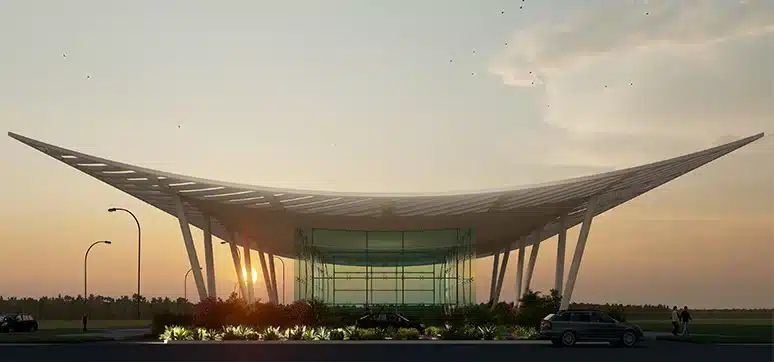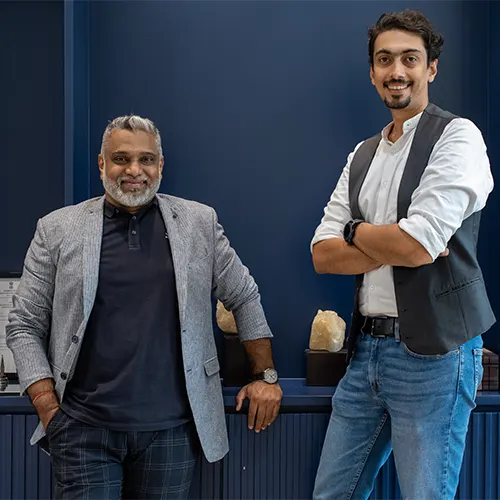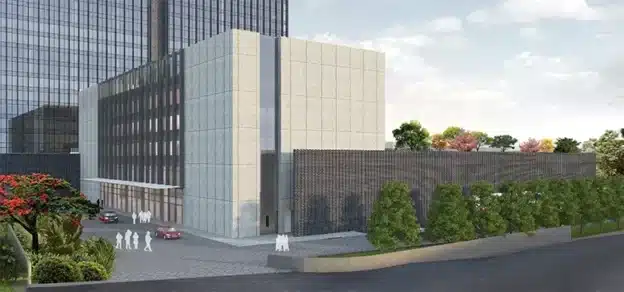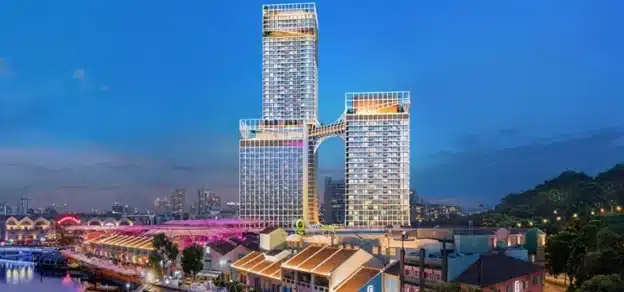Façade claddings are evolving as time passes with their functional features being upgraded and their aesthetic getting more contemporary and smarter. Façades are the key elements to beautify our structures. There are various façade systems and materials available to select from:

1. Perforated parametric designs are the trends in façade panelling taking into account sun paths, wind direction, shading coefficients, etc. Façades are screens, which can be shaped with multiple algorithms to make them more sustainable and efficient. Vibrant colours and parametric designs are the new norms of expressive façades Parametric-based designs for kinetic façades not only optimise daylight performance but also reduce the heat gain in the structure.
2. Fibre-reinforced polymer (FRP) materials exhibit high thermal insulation and corrosion resistance, making them cutting-edge over traditional materials. They are cheap and quick to produce, strong, lightweight and resistant to heat. These properties of the fibre-reinforced polymer are gaining huge traction in the façade material market.
3. Green façade – Vegetated walls, landscape walls, green walls and vertical gardens are a few of the green façade techniques. In this, the façade generally consists of a support structure and cheaper plants are made to grow upwards. The plants are often grown hydroponically, but at times they are grown in soil too.

4. Solar cells or PV solar façade – Photovoltaic cells or PV Glass façades are quite prominent in buildings internationally, yet they haven’t gained much prominence in India. They are a perfect fit for new buildings as well as an ideal material for the renovation of old façade systems to turn the structure into an energy-efficient solution. They offer many advantages like reducing electricity consumption and also reducing carbon footprint.
5. Glass – Glass has been one of the oldest building materials used for façade, yet it continues to be amongst the most used material.
Two of the more exciting glass façade technologies that have been developed are Electrochromic Glass (also known as Smart Glass) and Kinematic Façade. Smart Glass is electronically tintable glass that can be used for windows, façade and curtain walls. Double-glazed glass façades are used for reducing solar absorption and for sound reduction. Kinematic façades have been used as ‘adaptive shading’. In winter they can be moved to provide additional protection from heat loss, while in summer they can protect façades from solar heat keeping the cooling less.
Before finalising the façade/cladding material for a structure, one has to understand the criteria that work for that particular structure. Cost and scalability are the two primary factors of new façade technology to be successful and accepted commercially.
Zee Shaan, Mumbai

The ‘ZeeShaan’ project is an endeavor to recreate a landmark in the area of the Western suburbs of Mumbai. It is a mixed-use commercial building with retail, offices, theatre, restaurants, lounges, outdoor sports facilities, food courts, etc. The site is flanked by roads on three sides making the elevation & structure visible from all sides.

Shaan Theater was a part of history, in the black & white era of cinema, so to recreate a modern landmark we have adopted a vibrant colour palette of VIGYOR to represent the lights, camera and action of the movies. The colour represents the advancement from the back & white era. Movable Aluminum Fins are used, which are connected with the Building Management System (BMS) to create an ever-changing effect in the elevation producing a play of colour. The movable fins represent technological advancement. The aluminium fins move as per the sun’s direction to give ambient light quality in the interior spaces. This fusion of movement & colour creates an ever-changing, bold and dynamic elevation.

The building is designed to have 85% of the offices facing the external view and natural light. A courtyard is designed in the centre, which gets in additional natural light into the offices. The aluminium movable fins are also used in the courtyard to create an ambience of diffused lighting in the interior spaces. The building is designed with a double-skin façade. The first skin is a high-performance floor-to-floor glass. The second skin comprises movable aluminium fins, 3 feet away from the glazing for increasing the insulation, decreasing the heat gain and increasing the light quality in the indoor spaces.
Quick Facts:
• Project: Zee Shaan – Under Construction
• Location: Vile Parle East, Mumbai
• Client: Zee Infra Group
• Design Architect: Pentaspace Design Studio
• Liasioning Architect: Anj Engineering Consultants LLP
• Structural Consultants: P.K. Sura
• Services Consultants – Mak Mep Consultants
• Construction Area: 2,00,000 Sq Ft
• Materials Used for Façade: Glass and Aluminium Fins
• Commencement Date: January 2021















